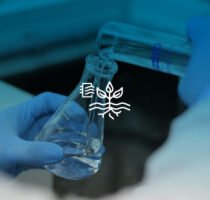Accelerated xenon chamber, UV chamber and thermal chamber aging tests allow you to simulate the climatic conditions to which products can be subjected and to assess the degradation of material properties, operating conditions and wear. The SCiTec’s equipments are able to accurately control the test variables and thus generate results of high metrological reliability.
There are several equipments to simulate the various weathering situations:
Climate chamber
The climatic chamber allows temperature and relative humidity parameters to be controlled and recorded throughout the test. The systems available at SCiTec allow testing with temperatures ranging from -70 ºC to 180 ºC. They are chambers of various sizes and ranges of operating temperature and humidity. From the rise of the temperature it is possible to accelerate the degradation of the material, or the product, and with this occurs an accelerated aging. As an example, we can mention the accelerated aging of packaging.
Thermal Aging – UV
The UV thermal aging equipment allows simulating the solar ultraviolet for the shortwave region. It is widely used for testing in plastics and coatings. Thus, it is possible to observe effects such as loss of color or brightness, opacity, loss of adhesion and resistance, cracks, among other failures.
Thermal Aging – ARC Xenon
Xenon chamber aging is performed by means of ultraviolet aging instruments equipped with a xenon arc lamp. This is the accelerated aging test that simulates natural aging with the full spectrum of sunlight, including UV, visible and infrared.
Climate and aging tests can be carried out according to specific standards or according to the customer’s needs.
These tests evaluate the weathering of the materials, simulating conditions to mimic the damage caused by sunlight, rain and dew, which would occur over months or years.
References
- IEC 60068-2-14, Environmental testing – Part 2-14: Tests – Test N: Change of temperature
- IEC 60079-0, Explosive atmospheres – Part 0: Equipment – General requirements
- ASTM F1980, Standard Guide for Accelerated Aging of Sterile Barrier Systems and Medical Devices
- ASTM G155, Standard Practice for Operating Xenon Arc Light Apparatus for Exposure of Non-Metallic Materials
- ASTM G154, Standard Practice for Operating Fluorescent Ultraviolet (UV) Lamp Apparatus for Exposure of Nonmetallic Materials
- ISO 4892-2, Plastics — Methods of exposure to laboratory light sources — Part 2: Xenon-arc lamps
- ISO 4892-3, Plastics — Methods of exposure to laboratory light sources — Part 3: Fluorescent UV lamps
- ASTM B117, Standard Practice for Operating Salt Spray (Fog) Apparatus
- ISO 9227, Corrosion tests in artificial atmospheres — Salt spray tests
- ABNT NBR 8094, Material metálico revestido e não revestido – Corrosão por exposição à névoa salina – Método de ensaio
- ABNT NBR 8095, Material metálico revestido e não revestido – Corrosão por exposição à atmosfera úmida saturada – Método de ensaio








